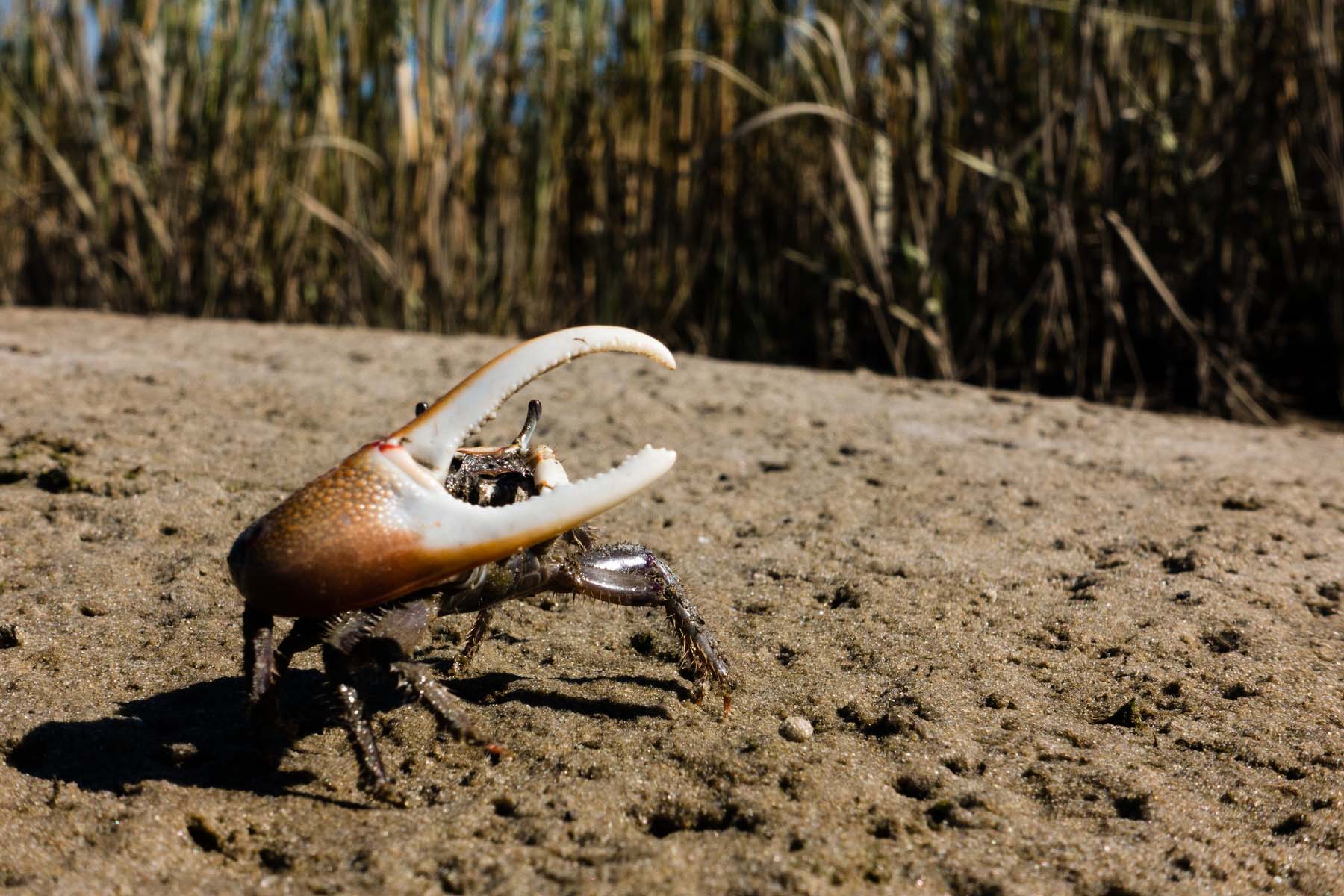Four ways critters find love
When it comes to courtship, these animals skip the flowers and chocolates

Finding your special someone can be hard. Take a look at just a few of the ways that animals in the Chesapeake find their perfect match.
Fiddler crab

Most people appreciate a clean home, and fiddler crabs take this to heart when trying to attract a mate. Males dig, maintain and defend a tidy burrow. To find a partner, males stand next to their burrow while females walk past. The males wave their major claw to attract a female’s attention. If a female is interested, she will stare at a male for a short period of time. The male then runs toward the female and runs back to his burrow. He repeats this motion several times until the female either moves on or follows him. If the female follows, the male drums the edge of the burrow with his claw, leads the female inside and shuts the door for a little privacy by plugging the entrance with sand.
Bald eagle
When it comes to courtship, bald eagles are adrenaline junkies. Their maneuver—known as the death spiral—takes the concept of the “trust fall” to a whole new level. Two eagles will fly into the air, lock their talons together and then plummet to the ground in a dizzying spin of a free fall, breaking apart just before they reach the ground. Sometimes, eagles get so caught up that they don’t break apart in time and can hit the ground, injuring themselves or even dying. For these raptors, who mate for life, the high risk must be worth it.
Blue crab
Female blue crabs mate only once in their lives, during a molt when they are in the soft-shell stage. To attract a female, males then put on a display to show how big they are: they’ll stand upright on their legs to look taller, spread their claws to look bigger and fan their swimming legs to show movement. Before mating, males cradle the female while she slips out of her shell. Once she molts, the pair mates. Afterwards, the male continues to cradle the female until her new shell hardens, offering her protection while ensuring she doesn’t mate with other males. Males eventually leave to search for another mate, while females migrate to the saltier waters of the lower Bay.
Ruddy duck
Although it doesn’t mate in the Chesapeake Bay region, this wintertime visitor’s courtship behavior is too fun not to include. To attract a mate, males go through an extravagant courtship ritual. They’ll stick their tails straight up and slap their chests with their vibrant blue bills, creating bubbles in the water as air is forced from their feathers. They’ll swim around females, make several calls and run across the water’s surface. To finish it off, they’ll make a belch-like call. Now who could say no to that?
Learn more about animal behavior in our Field Guide.

Comments
We never see this in the Chesapeake; they migrate out. But the the late 80s and early 90's we had HUIGE rafts of Ruddys adjacent my Cove. On the Patuxent's St Leonard Creek. There were thousands, and sometimes hunters (how nice of them) would run their boats down the creek to drive flocks of these birds together farther along. The easier to bag birds when they burst from the water in dense numbers. This sounded like distant thunder and I always though this might have been like what the colonists saw and heard centuries ago.
This lasted just a couple years, and we've never seen these numbers again. I've a couple 35 MM slides of these flocks but too far away to identify. I always shared these sightings with Steve Funderburk, who was then at USFWS in Annapolis and one of the authors of a broad wildlife assessment we did in those years. Rich Batiuk will remember him.
Thank you!
Your comment has been received. Before it can be published, the comment will be reviewed by our team to ensure it adheres with our rules of engagement.
Back to recent stories